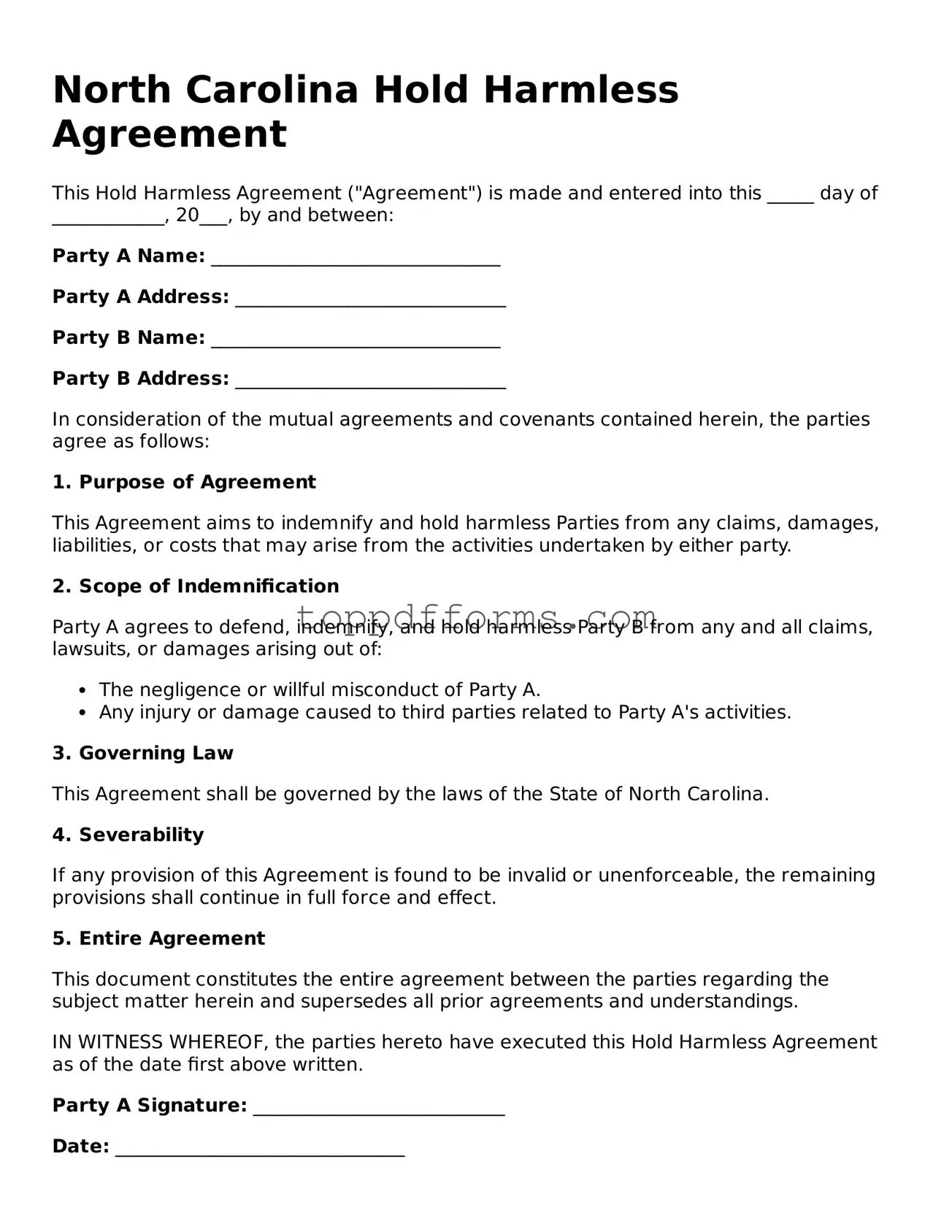What is a Hold Harmless Agreement in North Carolina?
A Hold Harmless Agreement is a legal document designed to protect one party from liability or claims that may arise from the actions of another party. In North Carolina, these agreements are commonly used in various contexts, such as rental agreements, construction contracts, and event planning. Essentially, one party agrees not to hold the other responsible for any damages or injuries that may occur during the course of their relationship or activity.
Who typically uses a Hold Harmless Agreement?
Various individuals and organizations utilize Hold Harmless Agreements. Landlords often require tenants to sign such agreements to protect themselves from liability related to injuries on their property. Event organizers may ask participants to sign these forms to minimize their liability during events. Additionally, contractors and subcontractors often include Hold Harmless clauses in their agreements to protect against claims from third parties.
Are Hold Harmless Agreements enforceable in North Carolina?
Yes, Hold Harmless Agreements are generally enforceable in North Carolina, provided they meet certain legal criteria. The agreement must be clear and specific about the responsibilities and liabilities being waived. It should also be signed voluntarily by both parties. However, courts may not enforce these agreements if they are deemed overly broad or if they attempt to waive liability for gross negligence or willful misconduct.
What should be included in a Hold Harmless Agreement?
A well-drafted Hold Harmless Agreement should include several key elements. These include the names of the parties involved, a clear description of the activity or relationship, specific language outlining the liabilities being waived, and any limitations on the agreement. Additionally, it’s advisable to include a clause stating that both parties understand the terms and have had the opportunity to seek legal advice before signing.
Can a Hold Harmless Agreement protect against all types of liability?
No, a Hold Harmless Agreement cannot protect against all types of liability. While it can shield a party from certain claims, it typically does not cover instances of gross negligence or intentional wrongdoing. Courts often scrutinize these agreements to ensure they do not violate public policy. Therefore, it’s essential to understand the limitations of the agreement and consult legal counsel if necessary.
How do I create a Hold Harmless Agreement?
Creating a Hold Harmless Agreement involves drafting a document that clearly outlines the terms of the agreement. It is advisable to start with a template that includes the necessary components, such as the parties involved, the scope of the agreement, and the liabilities being waived. Customizing the agreement to fit the specific situation is crucial. Consulting with a legal professional can ensure that the document is legally sound and meets all requirements.
Do I need a lawyer to draft a Hold Harmless Agreement?
While it is possible to draft a Hold Harmless Agreement without a lawyer, seeking legal advice is highly recommended. A legal professional can help ensure that the agreement is comprehensive, enforceable, and tailored to your specific needs. They can also provide guidance on any state-specific laws or requirements that may apply, which can help prevent potential legal issues down the line.
What happens if a Hold Harmless Agreement is violated?
If a Hold Harmless Agreement is violated, the injured party may seek legal recourse. Depending on the circumstances, they may file a lawsuit to recover damages. The enforceability of the agreement will depend on its terms and the specific situation. If the agreement is deemed valid and enforceable, it may limit or eliminate the liability of the party protected by the agreement. However, each case is unique, and legal advice is essential in navigating these situations.
